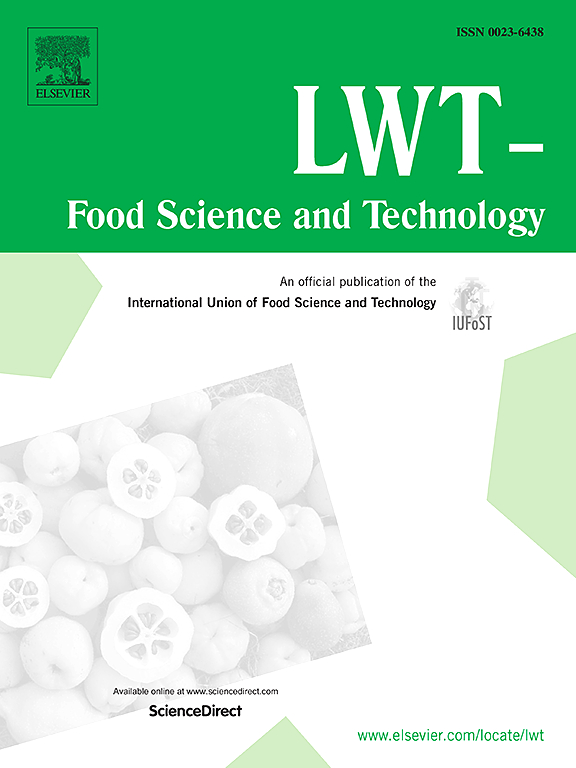Effect of ultrasound-assisted braising on the quality of mutton soup and micro-nano particles
IF 6
1区 农林科学
Q1 FOOD SCIENCE & TECHNOLOGY
引用次数: 0
Abstract
Ultrasonic-assisted simmering facilitated the dissolution of nutrients in the soup and enhanced its safety for consumption. This study explored the impact of ultrasonic conditions, including time, power, and temperature, on the quality of mutton soup. Analysis of the physicochemical characteristics, microstructure, purine content, SDS-PAGE, and sensory quality of mutton soups revealed that the physicochemical properties and sensory quality were more significantly influenced by ultrasonication temperature and duration than by ultrasonication power. Both the 90 °C-long time-low power (LLP) and 100 °C-short time-high-power (HHP) ultrasound treatments significantly increased the soluble protein content and the absolute value of zeta potential while reducing particle size (P < 0.05). Furthermore, fat and protein micro-nanoparticles (MNPs) were more uniformly distributed throughout the mutton soup, indicating that ultrasonication effectively improved its stability. Additionally, both LLP and HHP treatments significantly enhanced the contents of low molecular weight proteins, total free amino acids (FAAs), and 5′-nucleotides, thereby improving the organoleptic quality and nutritional value of the mutton soup.
超声辅助焖煮对羊肉汤品质及微纳颗粒的影响
超声波辅助炖汤有利于汤中营养成分的溶解,提高了汤的食用安全性。本研究探讨超声条件,包括时间、功率、温度对羊肉汤品质的影响。通过对羊肉汤理化特性、微观结构、嘌呤含量、SDS-PAGE和感官品质的分析发现,超声温度和超声时间对羊肉汤理化特性和感官品质的影响比对超声功率的影响更为显著。90°c -长时间低功率(LLP)和100°c -短时间高功率(HHP)超声处理均显著提高了可溶性蛋白含量和zeta电位绝对值,同时减小了颗粒尺寸(P <;0.05)。此外,脂肪和蛋白质微纳米颗粒(MNPs)在羊肉汤中的分布更加均匀,表明超声波有效地提高了羊肉汤的稳定性。此外,LLP和HHP处理均显著提高了羊肉汤低分子量蛋白、总游离氨基酸(FAAs)和5′-核苷酸的含量,从而改善了羊肉汤的感官品质和营养价值。
本文章由计算机程序翻译,如有差异,请以英文原文为准。
求助全文
约1分钟内获得全文
求助全文
来源期刊

LWT - Food Science and Technology
工程技术-食品科技
CiteScore
11.80
自引率
6.70%
发文量
1724
审稿时长
65 days
期刊介绍:
LWT - Food Science and Technology is an international journal that publishes innovative papers in the fields of food chemistry, biochemistry, microbiology, technology and nutrition. The work described should be innovative either in the approach or in the methods used. The significance of the results either for the science community or for the food industry must also be specified. Contributions written in English are welcomed in the form of review articles, short reviews, research papers, and research notes. Papers featuring animal trials and cell cultures are outside the scope of the journal and will not be considered for publication.
 求助内容:
求助内容: 应助结果提醒方式:
应助结果提醒方式:


